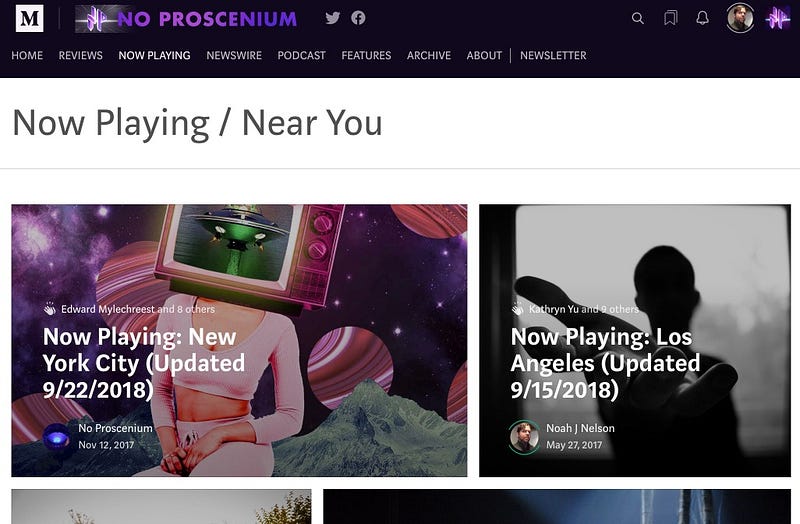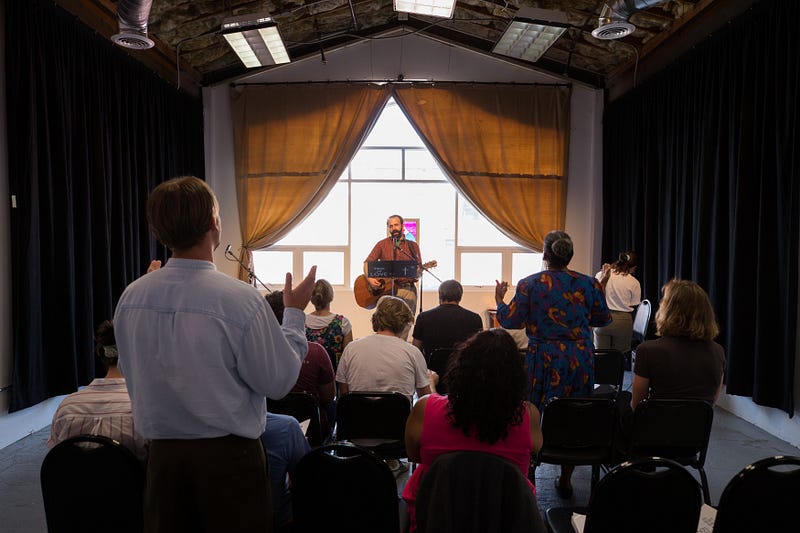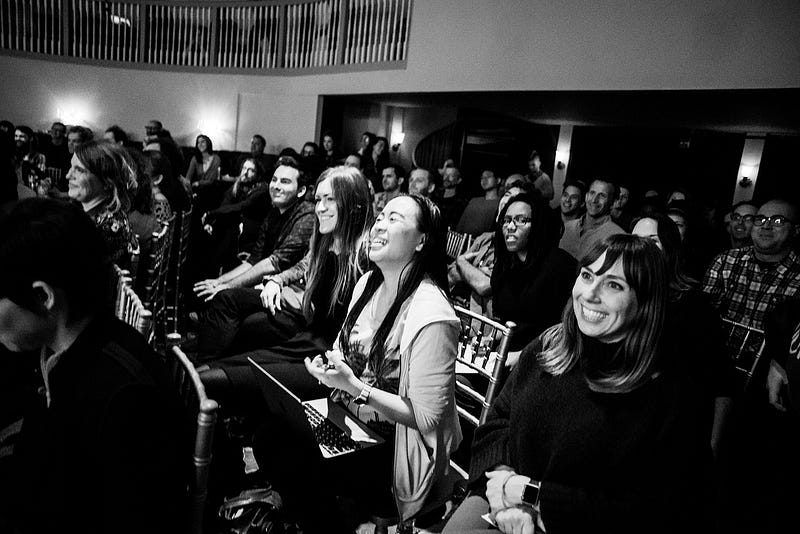
Why We Started No Proscenium, and What You’ll Find There

When I started No Proscenium around Christmas time 2013 it was because I needed something like it, and found it didn’t exist.
For my birthday that year I had traveled to New York from my home in LA to make pilgrimage to see Sleep No More after a good year of tales from friends in the transmedia world. While there I also caught Then She Fell, and it was while walking back to the subway in the Williamsburg night that my mind caught fire.
I knew that more work like this had to exist, and that I wanted to be part of that world. I spent the rest of the night scribbling furious notes about what made these immersive experiments tick at an after-hours joint in the East Village, where a friend was playing a jazz session.
When I got back to LA, I wanted to see more. I knew in my gut that others had to be making this kind of work on the West Coast, and before embarking on any venture of my own I wanted to know the lay of the land. Yet try as I might I couldn’t find a reliable source of information. I missed out on Invisible Cities, the large format immersive opera that put Yuval Sharon’s The Industry on the art map in LA just a few weeks after that trip. With that failure to catch work behind me I vowed that it wouldn’t happen again.
Over Christmas, I turned to the small circle of transmedia and theatre-making friends with whom I had regular dinner parties where we dreamed and schemed and let them know I was leveling up our email chain into an actual newsletter. I’d even picked out a name, thanks to the indignities of the domain name hierarchy. It would be called “No Proscenium,” a terribly theatre-nerdy name but an accurate description of the kind of work we were obsessed with. (A proscenium is, for those blessed to not have theatre arts degrees, the frame through which a theatrical production is presented: the arch above the stage.)
 A scene
from ‘Rochester, 1996,’ which plays out like an indie film in real time. ( Robin Roemer)
A scene
from ‘Rochester, 1996,’ which plays out like an indie film in real time. ( Robin Roemer)
The newsletter launched in January of 2014 and now, not five years later, we have a network of correspondents and reviewers that reach across the globe. In the past few weeks our writers have filed from the Utah preview of the Evermore immersive park, taken a deep dive on a piece of LA immersive theatre that plays out like an indie film, experienced a live version of Fantasia in the Vaults of London, and witnessed an immersive Hamlet steps away from the Seine in Paris. (Mercifully, none of this is on our non-existent travel budget.)
At first, the aim was to build up a collective audience for the work so that when I finally got around to making my own there would be an audience waiting. I’ve never been all that interested in making community theatre or toiling away in obscurity. I spent a few years after college being enlisted as a performer and technician in vanity projects that showed me firsthand just how damnably toxic that scenario can be. Besides, what I had seen in immersive was a tonic to the dissociation that our internet-centered culture had created over the past twenty years.
Once I was one of those romantics who believed that the internet was going to connect all of us in an empathetic mesh. By finding affinity groups no matter where they resided in the world, people would become more whole and thus more ready to lift up each other.
As it turns out, that naiveté overlooked the essential experience of the internet: looking at pixels on a screen.
Even the best transmedia work has to use every trick in the book to get around the fundamental fact that communication on the internet is a mediated process. Immersive work is, by its nature, immediate. While there are varying degrees of agency — from witness, to participant, to full-on protagonist — an immersive work puts people in the center of the action. When executed properly it is a powerful tool to create connection between the audience and the message of the work.
Now I’m not so dense as to believe that immersive work is going to save us from the dissociative madness that has gripped society, but I do believe that immersive productions have a bias towards empathy and connection. While that can be used to ill ends — as any cult leader can tell you right before they rip you off and leave you shattered — there’s also a muscular quality to empathy. The more you are willing to brave, the greater your capacity becomes.
Immersive work often seeks to put the audience in the shoes of the protagonist. You may, for instance, find your own inner monologue being replaced with that of the lead character until the point that you “become” her. You may find yourself going through the motions of her life, and in so doing gain visceral insight into the choices the way that an actor does as they research a role. Applied over a large cast of characters or taken in aggregate, a kaleidoscope effect comes into play: Audiences are given the opportunity to inhabit the perspectives of many, and not just the through-line of an arch-protagonist.
Now this is only one of the aspects of immersive experiences. What’s been exciting for me over the past five years has been to see all the ways that the work has evolved, all the different forms — both physical and digital, and those that merge the two — which have come into play.
At NoPro we do what we can to track it all: theatre, hybrid VR/live, escape rooms, immersive theme parks, marketing activations. We do that with the help of a passionate and dedicated volunteer team — I call them the “pirate armada” — who feel the same pull that I do to discover new work and build a world where creators can one day have sustainable careers in the arts instead of making it their side hustle.
 Front and
center in this shot from the first Immersive Design Summit is NoPro’s secret weapon: Kathryn Yu.
(Source: The Immersive Design Summit.)
Front and
center in this shot from the first Immersive Design Summit is NoPro’s secret weapon: Kathryn Yu.
(Source: The Immersive Design Summit.)While the newsletter, podcast, blog, and Facebook groups and Slack channels have yet to become my own day job, I take heart in knowing that the work continues to build an audience. Every few months we take down another wall that seemingly separates the communities that are developing this form and bring them into the same space where they learn and grow together. (This is something we literally do at the Immersive Design Summit, which we co-produce. Well, maybe not literally take down walls. Our venues wouldn’t be happy about that.)
One day I may finally get around to producing an immersive theatre piece of my own, but for now I’ve found my calling… and there’s plenty of work to go around.
Immerse is an initiative of the MIT Open DocLab and The Fledgling Fund, and it receives funding from Just Films | Ford Foundation and the MacArthur Foundation. IFP is our fiscal sponsor. Learn more about our project here.